Make simple but traditional beef dishes this Eid
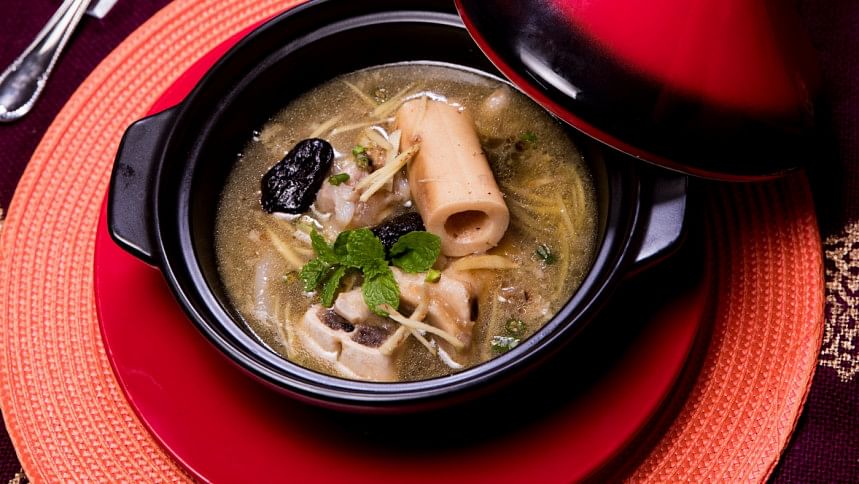
Asadgate New Colony woke up to a festive buzz every Shab-e-Barat from 1975 to the mid 80's, but a large part of this excitement was not about the expected halwa-rotis, rather for beef. Portions of cow meat were sold at the large field of the colony very early in the morning, the entire thing organised by the boys of the colony. Most families would buy meat from there, and families enjoyed that mixed meat preparation with rice flour rotis; the delicious taste still fresh in my memory.
My father would say "Jhal e jhosh-e ranna koro" or to cook it with a lot of red masala and oil. Actually, when beef is cooked with various parts of the animal mixed together, like that from the head, rump, leg, ribs and lungs, it was a very different taste from the usual curries.
The roasted spleen
This one time, we had gone to the village to celebrate Eid with family. After all the Qurbani meat was portioned, my cousin came up, holding something odd and said, "Tillikhan pora ewar nageche," meaning that the spleen had to be burnt. I was quite surprised at what sort of food was this!
Then I saw my grandmother take the tilli, or spleen, wash and clean it, and then put it inside the earthen stove to roast, along with some green chillies and garlic cloves. Once roasted, she mashed all the ingredients along with coriander leaves on a mortar and pestle. Then, adding some freshly cut onions and mustard oil, and gave it to us to eat. There I learned that spleen could be prepared like that, and since then have been roasting it on a pan to make something similar for myself.
Not just the bhorta
That's not the only way spleen is prepared though. It can also be cooked as a "bhuna." For that, it has to be cut into small pieces and boiled, and the water discarded after. You can add liver into the mix too. Once boiled, it has to be sauteed in a little bit of oil, salt and bit of turmeric. Add ginger, garlic, and cumin, and keep stirring until the oil separates, when you need to add a lot of whole garlic cloves. Cook on low heat so that the garlic cloves cook through. Add it some freshly chopped onions right before taking off the heat.
A lot of people don't like cow intestines, but there are many others who find it delicious. A lot of hotels in Dhaka also serve it now. The longer it is cooked, the tastier it becomes. I had its tastiest preparation in Rajshahi, with the locally famous Kalai ruti. Digging into steaming fresh kalai ruti and delicious hot intestines sat on wooden benches by the roadside remains unforgettable.
People even cook dishes with the meat from the cow's teats. Most kabab shops sell "Khiri kabab," but in the northern regions like Rangpur and Dinajpur, people make bhuna with this type of meat cut into small pieces, and it is much tastier than kababs, I found.
The same applies to cow brains. Brain kababs and cutlets are more popular commercially, but at home, usually brains are also cooked as bhunas. The brain bhuna from Najirabazar remains fresh on our minds, just as we ate it as students in the 80s.
Buffalo is meat too
Most people do not like buffalo meat, but it is being sold in many butcher shops, and we end up eating it without knowing the difference. It is also favoured for Eid-ul-Azha sacrifice in the northern regions. It is also sold commercially plainly, without deception. But aunties say that there is a trick to cooking buffalo meat well— the pieces should be small, and cooked for longer than beef. The longer it boils over a flame, the tastier it becomes.
I got proof of this at some hotel in Karwan Bazaar. The meat is put to cook in the pot in the morning, and stays on the low flame all through the day. At night, truckers with their vehicles full of goods stop by for dinner, and enjoy that meat with the rice or paratha served at the hotel. The menu openly states that it is, in fact, buffalo meat. This preparation is also quite delicious!
Beef with pumpkin
Sometimes, when my mom's meat store was a bit low, and all of us were waiting for dinner, she would cut up the meat into really small pieces, and cooked it with pumpkin. This is a recipe from the Rangpur region. She would first start by dry roasting the meat and spices in oil, and once it started to separate, she would cut up the pumpkin into small pieces, and add it to the beef. Gradually, spoon by spoon, she would put in some water, and keep roasting. Once done, the finishing touch was a seasoning of cumin sauteed in oil. This was delicious enough for us to easily eat our rice with the tiny pieces of meat and a lot of the pumpkin.
The same recipe can be applied to beef with water gourd or tomatoes, by switching out the pumpkin for a combination of the other two.
Beef at Hatirpool Bajar
As a child in the early 70's, I would visit the Hatirpool market with my dad to buy beef. The beef sold at Hatirpool and Kathalbagan was popular back then, and the markets ranked right after Thatharibazar and Aminbazar in Old Dhaka. Butchers' and Supershops weren't as commonplace as they are today, and the beef were probably Tk 8 for a 'sher.'

I still remember my father bringing 2 or 3kg of rib and leg meat and asking mom to make a red oily curry with whole garlic in it. This dish is practically impossible to put down once you start eating it. The whole garlic took on the form of beef, and sometimes fresh new potatoes were added too, after being fried separately first.
What about the tail
Tail stew is quite popular in parts of the world, but we Bengalis prefer our spicy bhunas much more. Tail meat becomes very tender if cooked over a low heat for a long enough time, even the bones become easily edible along with the meat. The cooking process is the same as any other beef bhuna, but adding some crisp fried onions to the dish as a finishing touch can elevate the taste by miles. Most have never tried this cut though. Tail meat is sold separately in the market. I think it is worth a try at least once.
Beef with spinach
For most food enthusiasts, beef is a beloved item, delicious even when half tender and boiled in some basic spices. But those who want to have healthier preparations of beef, one option is to cook it in spinach. The recipe is simple too. Cook the meat like a usual bhuna, and keep gravy. Do add some small potatoes while it is boiling. Once the beef is done, tear up some spinach and fold into the meat and gravy, and stew on the stove on low flame for a very little while, about 3 to 4 minutes. You can keep as much gravy as you want.
A different stew
Beef stew is known to be delicious. But we could make a slightly different one this time. Take 2 kgs of beef with bones in a pressure cooker. Add thickly sliced onions, garlic, whole black peppers, a bit of vinegar or lemon juice, salt, some whole red or green chillies, a bit of chopped ginger, and a little bit of jaggery and mix to coat the beef in the marinade. Now put the pressure cooker on the flame. If the meat is tender, you will need just 2/3 whistles of the cooker, and if tough, up to 5 whistles could be needed. You can also add a bit of oil, but it is not necessary. Open the cooker to check for tenderness. When almost done, add cut potatoes, carrots, radish, cauliflower, green beans, and capsicum to the broth, and keep cooking on a low flame. Once everything is boiled through, add the garnish black pepper powder and sauteed onion and garlic. It will feel much more like a soup, and can be enjoyed with roti, bread or rice even. It tastes great on its own too.
Popularity of shredded beef
There is quite a demand for the shredded beef that results from repeated warming of the beef bhuna. A large quantity of beef is put on the stove with a very few spices, and almost never needs any water to cook. As it cooks repeatedly over a low flame day after day, it takes on a more fried texture, and this is more commonly known as "jhura/jhuri gosht." But care needs to be taken so that it is never heated on a high flame such that it does not become too dry or too tough. The bone should be eaten in the first few days, as that save the rest from developing a hard unappetising smell. This jhura beef is never really kept in the fridge, rather heated again and again in the same pot, and kept at room temperature otherwise, letting the delicious beef aroma waft through the entirety of the home.
Mom's special kabab
Eid meant special kababs made by mom. She never could say where she learnt it. Nor could she tell us the precise measurements of the various ingredients, always saying "appropriately" or "to taste." That's because they cooked based on estimates based of their own experiences. Since mom passed away two years ago, we have tried to replicate her recipe but never quite get it just her way. But I am sharing the recipe anyway, because I never had such delicious kababs anywhere else.
Take 1 kg boneless rump meat and chop into very small pieces. Soak 1 cup raw chana daal (split chickpeas) for a while. Now drain the daal, and blend it with the beef. Separately blend 2 or 3 pieces of a raw papaya, with skin. Add a bit of nutmeg (jaefol, jayetri), 1 black cardamom, very small quantity of fenugreek and fennel, green chilli paste, salt and sour yogurt. Also add some crispy fried onion slivers (beresta) along with the oil. Let all of it marinate for 8-10 hours. Later, brown some onions in oil, sauté some fenugreek in it, and add the marinated beef, and keep on a low flame. Keep stirring, but no water needs to be added. After a while of stirring, the beef will become completely tender. Just take it off the stove once the oil separates. Mom's kebab would be ready. It tastes outstanding with paratha, and garnished with sliced onion, green chilli, cucumber and fresh coriander leaves.
Cooking various dishes of meat is a time-tested culture of the Eid-ul-Azha festival. Every family has their favourite recipes, and Eid day traditions of Qurbani activities. Nothing quite brings out the foodie side of people like the festival of sacrifice.
Translated By Sania Aiman
Food and Styling: RBR

 For all latest news, follow The Daily Star's Google News channel.
For all latest news, follow The Daily Star's Google News channel. 


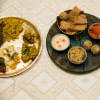
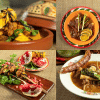
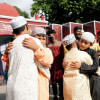
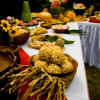


Comments